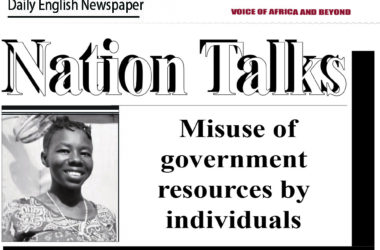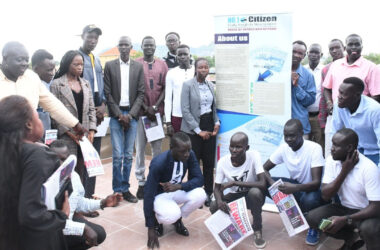By Malek Arol Dhieu
A forced peace is wilder than a spontaneous peace, in that it needs a million appeasements to get maintained. It took Governor Rin Tueny Mabor a hectic month chasing peace in and across the eight counties of Lakes State until he finally caught it.
Having peace at hand, there is a number of rituals which must be performed for a forced peace to undergo a conformational change to become sustainable.
First and foremost, after a month or so of calmness and, of no reports of killings, dialogues must be called for between major conflicting communities one after another, and thereafter, one unifying dialogue follows to bring the 8 counties together, including the less violent Awerial and Wulu Counties.
These dialogues mean to air out grievances among communities and forge for a possible way to address them amicably because there is no conflict without a cause. Once grievances are aired out, anger alleviates, and as anger alleviates, the sense of brotherhood grasps an opportunity to take lead.
After dialogue, reconciliation immediately follows to accelerate wound (trauma) healing and restore the love of humanity. This can ultimately be followed by service delivery so that people themselves regret for denying themselves a chance to live a better life. It is after this that peace would accept taming!
By now, this forced peace would not be tethered any more after nearly two years under taming conditions, but today, indicators are blinking that, if someone forcing the sustainability of peace goes away, then chances of conflict resuming are very high because of poor maintenance.
There is no sustainability of peace in killing somebody who has murdered a fellow, there is no maintenance of peace in usurping resources of a murderer, there is no implementation of peace in traumatizing the already-traumatized people by an unnecessary survey in a season of hunger.
And finally, there is no embracement of peace in selectiveness of law in that there are people who are resistant to law while others are vulnerable to law.
But there is sustainability of peace in love of humanity by letting go the perished people and preserving the living ones! There is an embracement of peace in creating jobs (manual jobs for converting cattle keepers into urbanists, and office jobs for youths loitering, believed to be conflict accelerants) rather than relatives and cohorts being employed almost in every institution, with the governor’s office being the worst.
This makes the situation almost the same as before, with ‘that of before’ being better because of services. Who will embrace peace if embracers die of hunger, intimidation and suppression? It would be good if services are delivered as a means to sustaining peace.
What happens on the day that an unfed tied strange goat is released? It escapes to where it came from, period! This is what our forced peace will do when it gets a chance. To restore permanent peace in Lakes State, the conflict should not be resolved from its expression point, but from its original point until the month it was reported missing.
This can only be achieved by flattening the plateau of fear that has stricken the people of Lakes State to look at their government as that which is terrorising, nonsensical and intolerant to suggestions!
The author is a medical student, University of Juba.
Latest Stories
- 14 hours ago
- Juba Modern Shopping Mall construction resumes
- 15 hours ago
- Country-driven research MoU signed
- 15 hours ago
- World Bank funds climate-smart farming in South Sudan
- 15 hours ago
- Jebel Lado residents appeal for urgent aid as floods hit
- 15 hours ago
- SPLA-IO condemns attack on its position in Jonglei State



